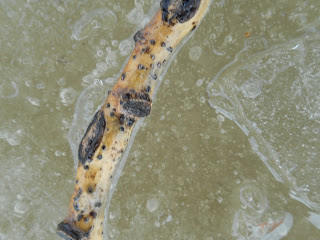Hi Families,
Another weird week for weather, but it helped us out tremendously for our "Seasonal Changes of Water" photography project as we had opportunities to photograph snow, ice and melt. The students are capturing some phenomenal images and we learned some vocabulary for the elements of photography so that we could critique photographs accurately: symmetry, rules of thirds, leading line, contrast, colour, texture, pattern, bird's eye view and ant's eye view.
As a writing activity this week, students looked at the samples of photos from last week that were printed out and chose one to critique using their new vocabulary knowledge.
They also went through their second batch of photos and did a quick "keep/delete" sort. We look forward to continuing this project through the next couple of months. I wonder what water weather this week will bring us?
In the Work Period, students also explored writing with homophones. Given the choice of two homophone pairs, students chose their preferred pair, and created an illustration to explain the difference, and well as a creative sentence using the correct homophone. This week, student chose between see/sea and right/write on one day, and pair/pear and which/witch on the other.
With our buddy class, we have begun exploring the Montessori Timeline of People connecting to the Third Great Lesson: Coming of Human Beings.
Through her research, Maria Montessori believed that the fundamental needs of people could be sorted into two categories: material and spiritual. In our introductory activity, students discussed which needs fit into each category: food, religion, ornamentation, shelter, music, dance, transportation, communication, clothing and defense.
After this activity, students began viewing the Timeline of People, starting with the Lower Paleolithic Period, and were asked, "What do you notice?" Many students noticed that the way of life was addressing survival needs, and all material needs being met, in basic ways. In the Middle Paleolithic Period we start to see people move from a nomadic way of life to building communities, and the beginning of art through rock painting and engravings of animals. Their art communicated their way of life.
We will continue to examine the Timeline of People to see when, how and why other needs are introduced, or how they change over time.
An interesting question came up in our examination of the Timeline so far. Students wondered, "Just because things are getting easier (or more efficient) over time, does that make it better?"
Field-trip forms for our upcoming visit to Fish Creek Park were sent home on Thursday. Please ensure these are returned with payment by Monday so they can be properly accounted for, and processed. These field-trip forms cover all four visits to Fish Creek Park: April 18th, May 9th, May 30th and June 9th.
We are still looking for two volunteers for Wednesday. If you are able to join us, please email me and I will send home forms ASAP. Thank you!
Given the time of year, and the amount of melting that is happening, it is so important that students wear water-proof boots that are comfortable for walking and pack an extra pair of socks just in case. A nutritious lunch, snacks and water bottle are also necessary for the day. I recommend students address in layers as ALL our programming will take place outside, and we do not have access to the Visitor's Centre during our visit.
We are also going to Ralph Klein Park on Wednesday, April 25th and require additional volunteers. Again, please email me if you are able to join us for the day.
Thank you everyone! Have a wonderful weekend!
Ms. Thomas



